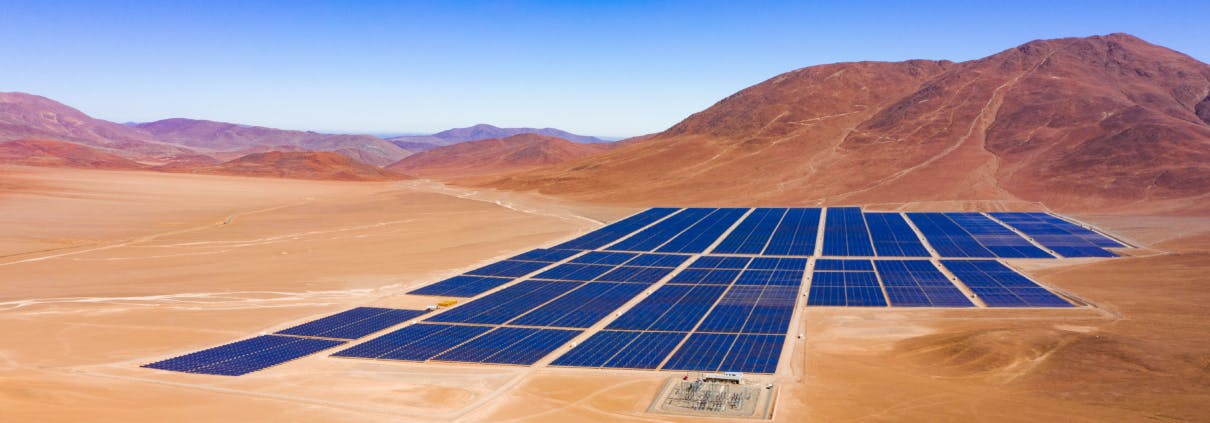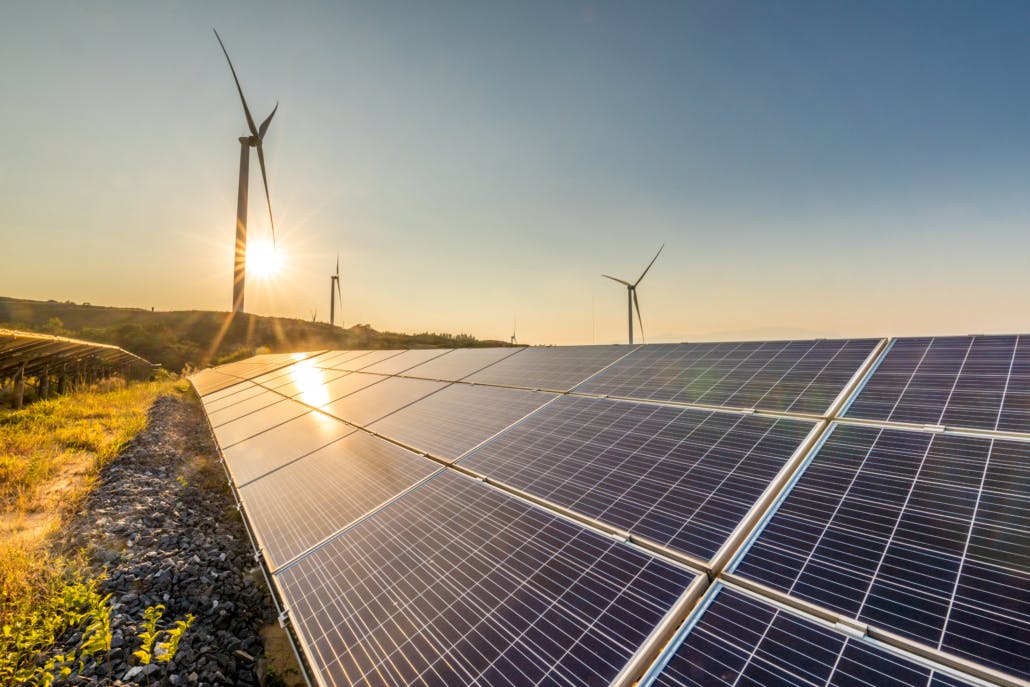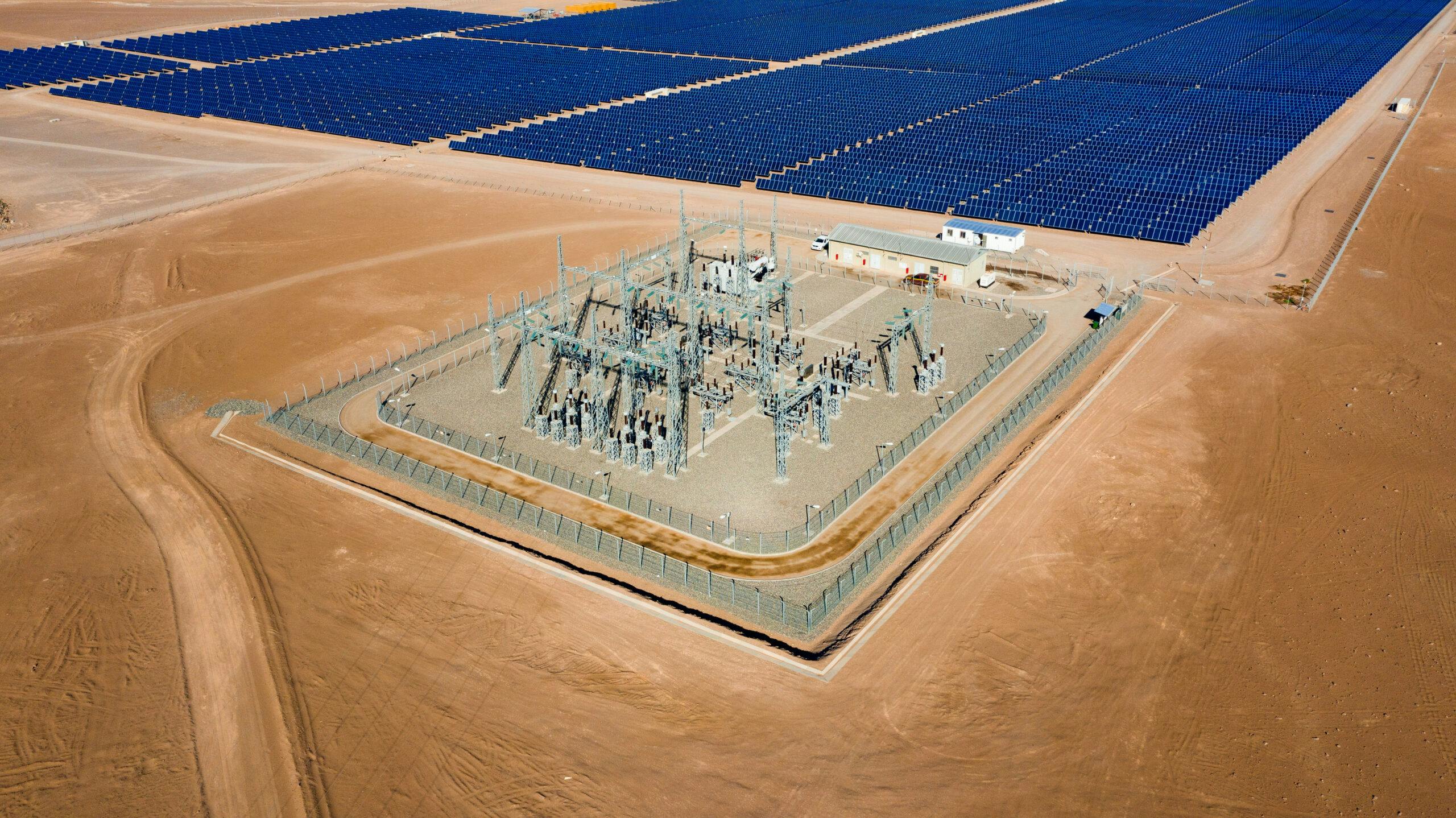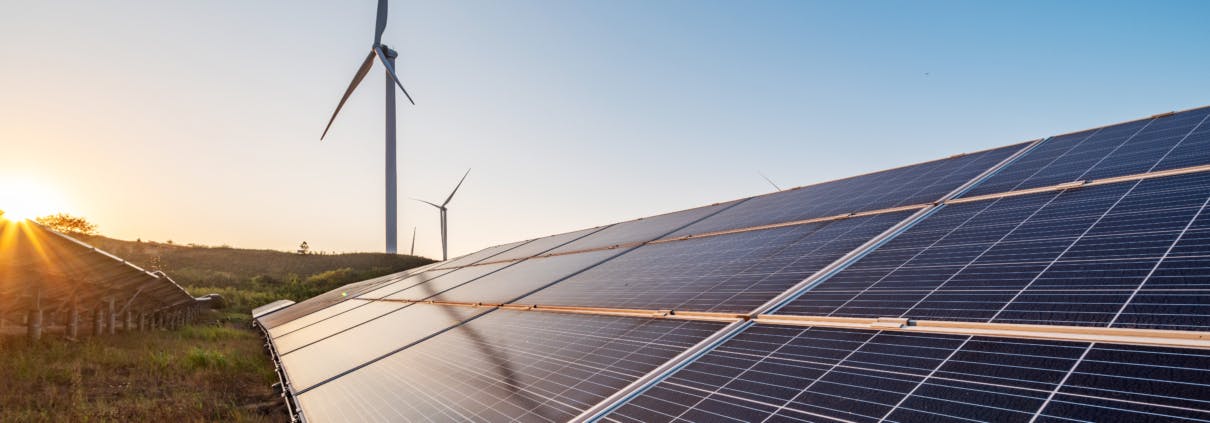What can renewable energy do for the mining sector?

The mining sector is one of the world’s largest energy consumers. As renewable energies become more accessible, it’s time to take stock of what mining companies have to gain by making the switch.
This topic was precisely the focus of Atlas’s most recent participation at the Prospectors and Developers Association of Canada’s annual convention, a leading event for the world’s mineral industry. Representing over 6,000 members across the globe, the PDAC works towards supporting a competitive, responsible, and sustainable mineral sector. With these keywords in mind, Atlas’s Head of Commercial, Renato Valdivia, argues that “both the renewable energy and mining industries share certain key goals and incentives.” Below, we look at how both industries can help each other meet these goals.
Renewables make commercial sense
From a business point of view, the pros of renewable energy primarily point to reduced operating costs. According to a study conducted by Deloitte, incorporating renewables can reduce operating costs by 25% in existing mining operations and up to 50% for new mines. Given that energy usage constitutes roughly 30% of total operating costs for most mines, it’s worthwhile to consider long-term strategies that can accommodate growing energy needs in the most sustainable and cost-effective way.
Renewables allow for tailor-made solutions
Perhaps the most significant obstacle when it comes to integrating renewable energies has to do with lagging perceptions about the reliability of green energy sources and the complexity of navigating power purchase agreements (PPAs). The benefit of securing an independent renewable energy contract, however, lies precisely in the ability to adjust PPAs to specific energy needs, rather than relying solely on energy sources that create their own problems in terms of waste and risk management.

It’s vital to understand how personalized PPAs can provide higher value solutions by taking into account the unique characteristics of a particular location, in combination with the demand profile of each mine. A ‘one-size-fits-all’ mentality will never be able to optimize energy expenditure, cost, risk, and sustainability goals.
Carbon emissions come with a toll
The mining sector accounts for 4-7% of global greenhouse gas emissions. Arguably more than any other industry, miners face incredible pressure by part of governments, investors, and society to reduce emissions. This pressure takes the form of regulatory frameworks to tax carbon emissions, which will continue to impact large energy consumers unless they take steps toward cleaner energy sources.
According to the World Bank, carbon pricing instruments have already been adopted in 40 countries, while others have been implemented at regional and local levels.
Valdivia’s suggestion would be to start with electrification as the first strategy to reduce the carbon footprint. “Green hydrogen can replace fossil fuels, should electrification not be an option,” he says. “Ultimately, we need to completely replace the use of fossil fuels if we want to reach net zero. This calls for the renewables sector and the mining sector to work closely together to find systemic solutions that can yield long-term synergies.”
Investors favor renewables (consumers do, too)
The need for long-term, systemic change is evident when we consider that more and more institutional investors are pledging to support fossil-fuel-free strategies. As such, the ability of miners to reduce their carbon footprint goes hand in hand with potential business partnerships. Mining organizations are therefore uniquely positioned to play an essential role in accelerating innovative transitions in energy production, management, and distribution.
An observation from PDAC’s annual conference is the growing awareness of the central role minerals play in the modern economy and how the green transition will drive steeper demand growth for certain elements, such as copper and lithium. This points towards a nascent business model for the mining sector, one that works for and with the development of new renewable energy technologies. The challenge is finding ways to balance expansion with efficient capital allocation and cost containment – however, a comprehensive sustainability strategy, where a renewable component (and design optimization of the operations around maximizing its use) when planning for a new mine or expanding an existing operation would serve to unlock access to preferential green financing schemes and reduce the perceived investor risk.
Along similar lines, mining companies need to consider the growing consumer demand for supply chains to provide green commodities. Larger clients such as Volvo and Mercedes are cementing these demands by making green steel commitments, which are due to come into place over the next five years.
It’s business-critical
The shift toward renewable energy invariably falls under the umbrella of more significant environmental, social, and governance concerns. Due to their scale and intervention, mining projects tend to generate a lot of attention regarding ESG.
Mines require licenses to operate, which in turn are conditioned to ESG strategies. In this light, renewable energies offer more than simple cost savings. They also form a part of strategies that preserve a mine’s social license.
Atlas’ business model has always been about finding ways to provide innovative and tailor-made clean energy solutions for large energy consumers while acting as agents of change and stewards of social justice in the communities we touch. From our perspective, it’s all about pushing the concept of sustainability beyond clean energy toward an all-encompassing model for economic growth that strives for regeneration over depletion. Ensuring the triple bottom line is ultimately the most significant return on investment.
Although social and environmental benefits may be harder to quantify, they do create shareholder value.

A new mining model
The challenge for the mining industry is to determine how to provide the minerals the world needs to prosper, all the while making their operations part of the solution to address climate change.
Answering this question requires a willingness to rethink operational processes and enough leadership to transform an entire industry.
Current trends indicate that the move towards renewables is on the rise. Mining industry leaders should not delay in pursuing this course, or they may find themselves on a higher cost curve, playing catch-up with competitors.
It’s through the lens of renewable energy strategies miners can position themselves as key players in the technology and innovation space, attracting the interest of a specialized workforce and forward-thinking investors – all the while serving the communities where they operate.
In partnership with Castleberry Media, we are committed to taking care of our planet, therefore, this content is responsible with the environment.
Share This Entry


